How to Cut and Seed a Pomegranate Quickly: Step-By-Step Guide (With Pictures!)
Pomegranate is one of fall's most waited for fruits: juicy, unique and with a rich history behind it, it's also full of benefits for you. Here's the best way to cut and seed it quickly!

Everyone loves pomegranate: it is a delicious and inviting fruit, it can be eaten as is, or used in tasty recipes, not only sweet. Available starting in autumn, pomegranate is full of benefits: it contains a lot of water and mineral salts including sodium, potassium, iron and phosphorus; it is a low-calorie fruit (about 70 kcal per 100 grams of product) with great antioxidant properties: it has high levels of vitamin C and vitamin K and is rich in tannins, polyphenols (in particular gallic acid and grenadine) and flavonoids, excellent for fighting cellular aging.
In the kitchen it is used mainly for desserts , but it can also be combined with savory dishes: for example a risotto, very simple to make and refined, but also with main dishes based on meat (pork in particular), or it can be included in side dishes and appetizers. With pomegranate, moreover, you can make jams and liqueurs , so you always have the possibility of enjoying the fruit beyond its season.
But cutting and seeding pomegranates can often become difficult, due to the hard skin that surrounds these juicy red seeds: here is a little step-by-step guide to help you peel pomegranates quickly, enjoying all the flavor of this precious autumn fruit.
How to Cut and Seed Pomegranate Quickly
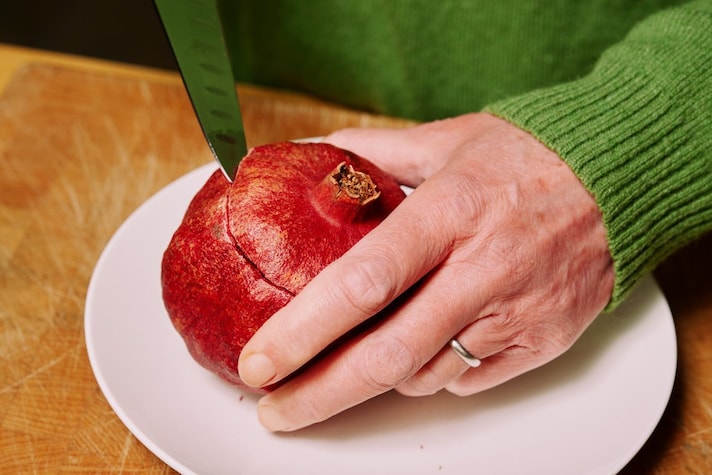
First, run the knife in a circular motion over the top of the fruit, as if to form a cap.
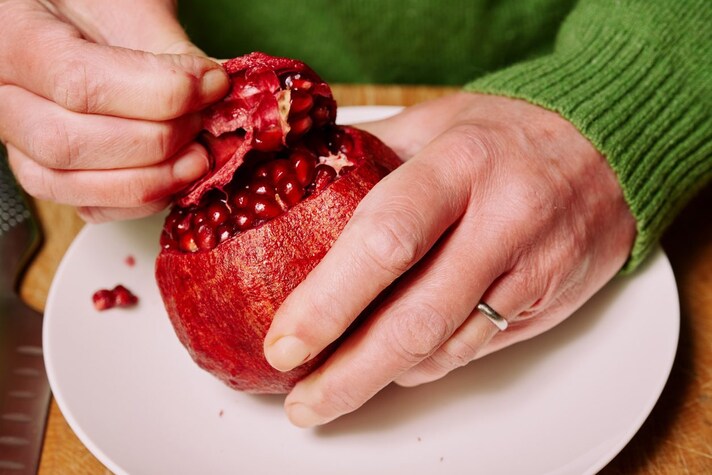
Gently lift the cap.
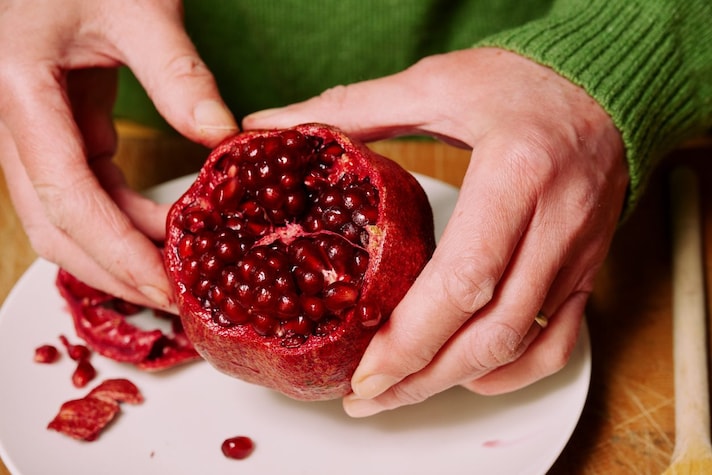
Remove the cap.
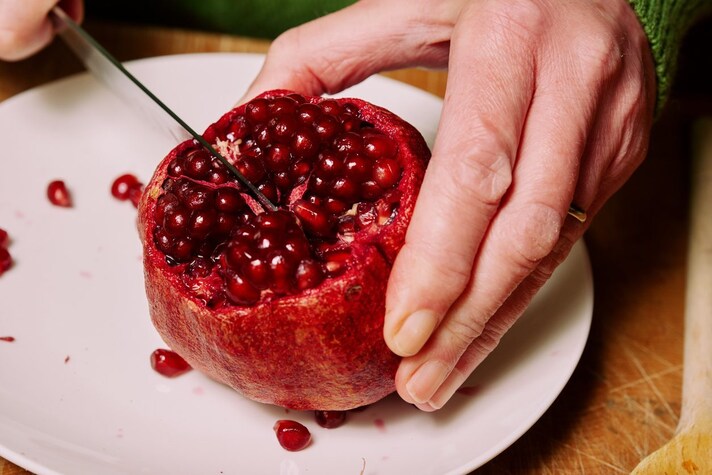
Cut the outer peel as you do with oranges: you should get some wedges.
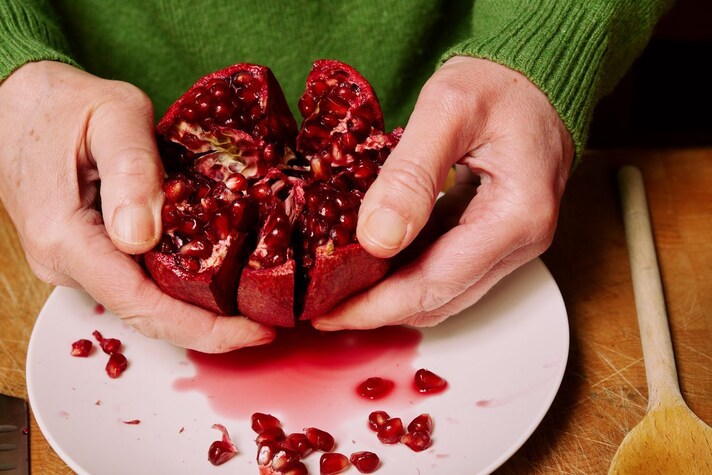
Open the cloves slightly.
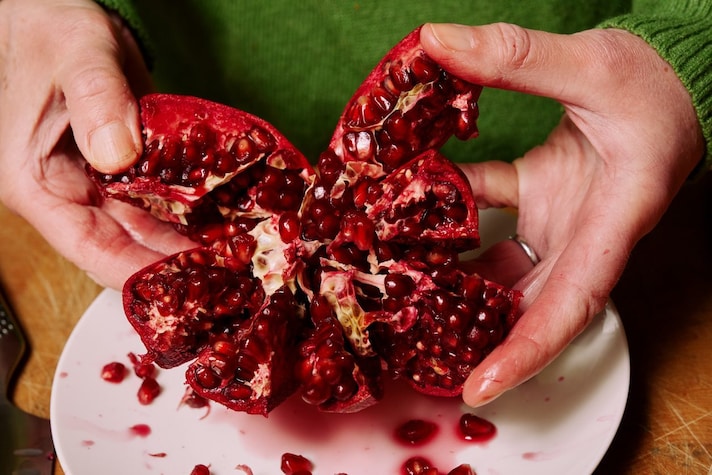
Spread each individual segment with your fingers, so that the pomegranate opens up.
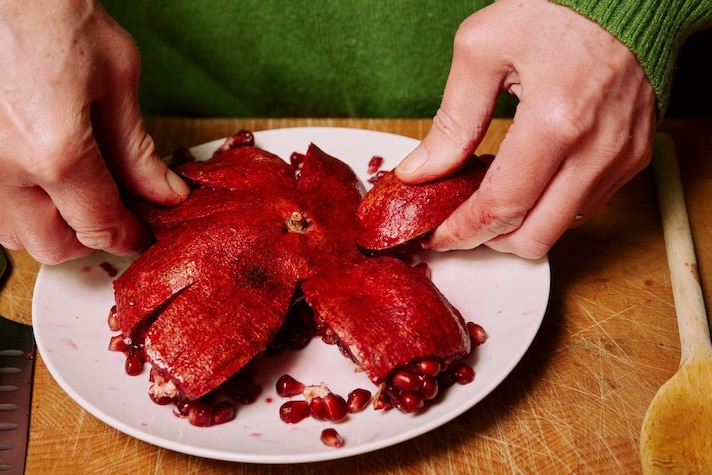
Turn the fruit upside down and start to separate each segment.
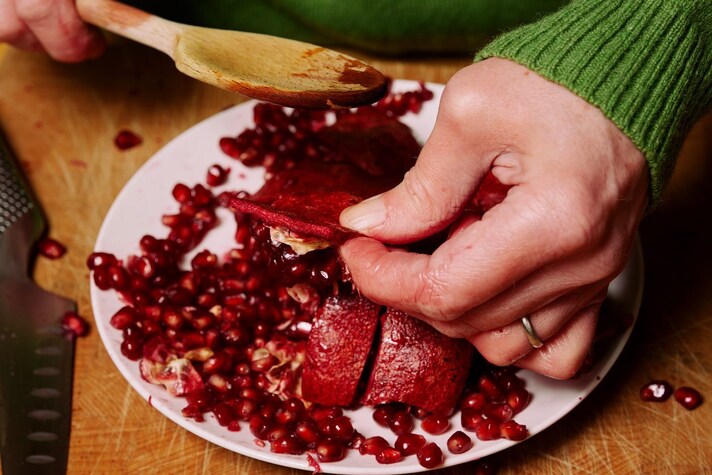
The grains will fall out easily without pressing too much.
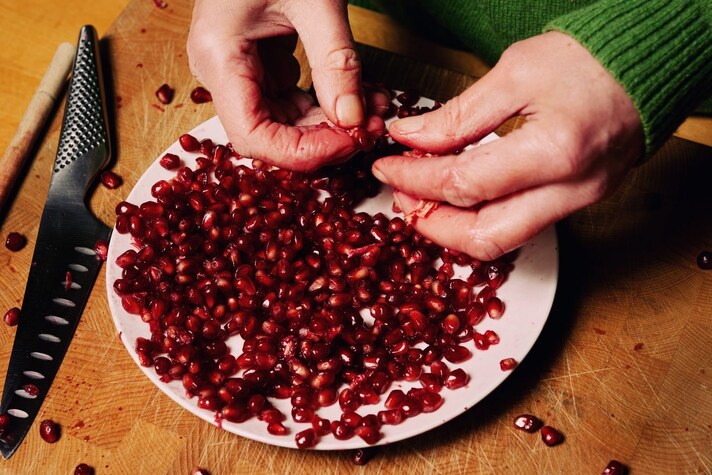
When you have finished shelling the pomegranate, collect the grains in a bowl.
Should You Wash a Pomegranate Before Cleaning It?
Absolutely, yes—you should wash pomegranates before breaking into that ruby treasure chest of seeds! Think about it: pomegranates grow outdoors, and their skins go through a lot before landing in your hands. Rinsing removes any dust, residue, or stray contaminants from their journey. Now, for the clever bit: soaking the fruit in a bowl of water after washing not only keeps the red juices from staining everything in sight but also helps loosen the seeds. The water’s gentle pressure encourages the seeds to separate from the pith, making the process smoother and less messy. Plus, the seeds sink while the bitter white membrane floats, making it easy to skim off. So, take the plunge—your countertops (and hands) will thank you!
How to Store Your Freshly Shelled Pomegranate Seeds
Once you’ve unlocked those vibrant pomegranate seeds, storing them properly keeps them fresh and juicy. The best move? Transfer the seeds to an airtight container and pop them in the fridge, where they'll stay fresh for up to a week. If you’re looking to savor that pomegranate punch a little longer, freezing is totally fair game! Just spread the seeds out on a baking sheet so they don’t clump, freeze until solid, then store in a freezer-safe bag. They’ll keep their sparkle and flavor for up to a year—perfect for sprinkling over salads or blending into smoothies whenever you want a burst of tart-sweet goodness!
;Resize,width=767;)



